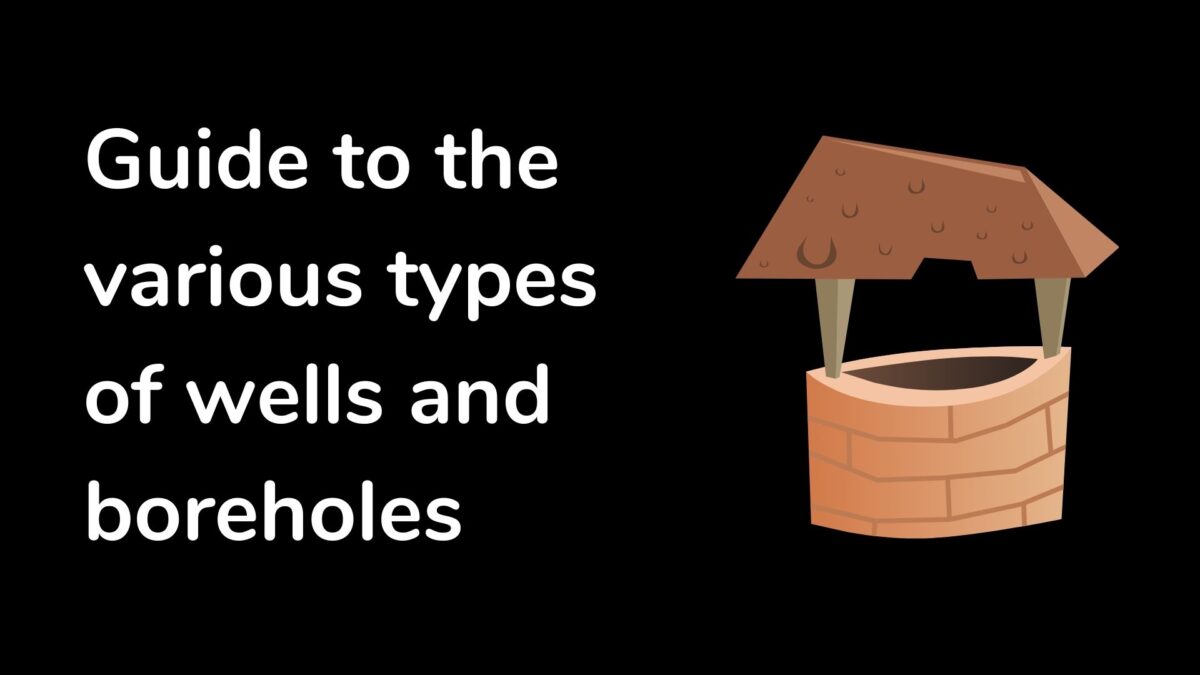Different types of wells exist and they differ according to their depth, their water volume, their cost or the purity of the water.
Water is sometimes subjected to treatment before it is consumed by users. Regular checks must therefore be carried out at the end of the work, but also throughout its existence.
Types of wells
There are 3 main categories of wells:
- Dug wells
- Dark wells
- Drilled wells or borewells
The choice depends on the aquifer, the hydrogeological data of the field, the speed sought (or not) and the cost of the work.
Why build a well?
The creation of a well or a borewells is an ideal solution to obtain good quality fresh water; surface water is often contaminated with pollution.
Wells and borewells are especially beneficial for people who live in areas where surface water is not available in sufficient quantity, but who have a good supply of groundwater.
Well construction: the techniques used
The construction of the different types of wells is based on techniques specific to each category.
The dug wells
This traditional technique is the simplest: the well is dug with a shovel and a pickaxe. It is less expensive, but more tiring than the other methods. However, mechanical means are used to avoid intense physical exertion.
The soil must be sufficiently exploitable and the water table shallow to be able to use this technique.
Usually, these wells are surrounded by stones to make them more solid. However, casing (using concrete rings) is a more efficient solution.
The dug wells are shallow and can go up to 10 to 20 m deep; some are 30 to 40 m, but they are rather rare.
Given this shallow depth, they are more easily exposed to pollution and drying out, unlike other wells.
Dark wells
This type of well is built by sinking; a vertical back-and-forth movement of a perforated tube with a pointed end in friable soil, such as sand or gravel.
To protect the well from the infiltration of particles, the lower part of the pipe is fitted with a filter.
In this type of well, water can be drawn from average depths of 15 to 100 m depending on the technique used. Indeed, the three driving means are:
Driving sinking
Technique consisting in driving a tube equipped with a point by dropping a drill bit on the end of the tube.
Water injection sinking
Water injection jacking involves injecting pressurized water into a tube to aid in digging the soil and clearing debris.
Jacking sinking
This method requires digging up the soil at the base of the casing in an upright position, allowing it (on the ground) to sink.
Drilled wells or borewells
The borewells are made using modern techniques, including striking a tool into the ground or by the rotary action of a cutting tool (drill or drill) that breaks and chews the rocks. If you need any kinds of borewell drilling services then do contact sk borewells which s one of the popular borewell drillers in Hyderabad, India.
The borewells can reach up to 300 m deep.
3 types of techniques are used to drill a well :
Manual means
Auger drilling, percussion drilling, water injection drilling, mud drilling.
Light motorized means
Down-the-hole hammer drilling, rotary drilling
Heavy mechanized means
They are ideal for very deep wells. The equipment is mounted on heavy trucks. Large rotary drilling tools are used to chew or break rocks; if the ground is soft, augers are useful when doing the drilling.


